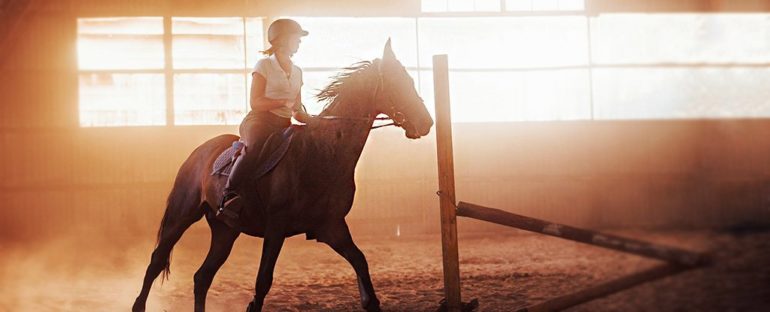For many people in the United States, a horse is likely to be a partner in sport and leisure, rather than labor. Yet it’s a pleasure that comes at a potential price, one many riders need to take more seriously.
A study on a decade’s worth of data from the US National Trauma Data Bank has revealed just how many people have landed themselves in hospital as a result of injuries sustained while horse riding.
The short of it is: If you’re the kind of person who thinks a weekend dashing down the snowy slopes isn’t worth the risk of a broken bone, you might want to steer clear of the saddle. Matched hour for hour, horseback riding resulted in more trips to the hospital than skiing.
For what it’s worth, you’d also be better off playing a game of football, or even straddling a motorcycle, for that matter. A previous study performed in the UK found injury rates for motorcyclists at around 0.14 for every 1,000 hours of riding. Horse riders could expect 0.49 injuries for every 1,000 hours.
This isn’t to dissuade anybody from the pleasure of a day out riding the trails. But the team of Texas researchers behind the study are keen to see more public safety messages around the risks that come with horseback riding.
“Recently, some attention has been paid by equestrian sporting agencies to the use of protective equipment to prevent injuries, especially as it relates to concussion and brain injuries,” the team writes in their report, published in the BMJ journal Trauma Surgery & Acute Care Open.
“However, very few public health campaigns have focused on preventing injuries in riders using horses for leisure and work.”
This isn’t the first study to tally the kinds of injuries Americans are likely to get from horse riding. Most previous research has, however, been localized to specific regions, making it harder to tell if the nation as a whole deals with similar risks.
Few studies have looked at the long-term health impacts either, focusing on administration and treatment for a specific injury. Still, considering what we know already, the results might not be all that surprising.
Of all horse riders presenting to a hospital following a spill, only around 10 percent were given the all-clear. Roughly 37 percent of those who are injured while horse riding seek hospital care for trauma to their thoracic region (chest and upper back area), making it the most injured part of the body.
Around a quarter sought medical assistance for damage to their extremities, and just over a fifth for a head injury. In a small handful of cases – just under 4 percent – admissions came in with a concerning level of consciousness, one that predicted severe neurological impairment.
In half of all cases, a stay in a hospital ward bed was the worst they had to endure. Just over a quarter of all admissions would go into intensive care, though, with one out of every ten coming into the hospital needing surgery.
Most riders would go home after their stay without needing any follow-up services, though in around 7 percent of cases leaving hospital meant admission into rehab, if not a nursing facility.
Tragically, in the sampled years of 2006 to 2017, 320 of the nearly 25,000 people included in the analysis would never return home, losing their life as a result of their injuries.
It’s a list of statistics that need not be as extensive as it sounds. In spite of sustaining comparatively fewer injuries, football associations have increased their campaigning for better head protection in recent years, following a heavy focus on risks of brain trauma.
Whether it’s the romance of riding Hollywood style, unfettered by protective vests and helmets, or a sense of freedom galloping along with the wind in the hair, the message of gearing up to giddy-up isn’t as strong as it should be.
So take it from the experts, who conclude that with better campaigns for protective gear and “awareness of injury patterns, we can continue to enjoy this popular sport while simultaneously reducing the number of severe injuries.”
This research was published in BMJ Journals Trauma Surgery & Acute Care Open.



